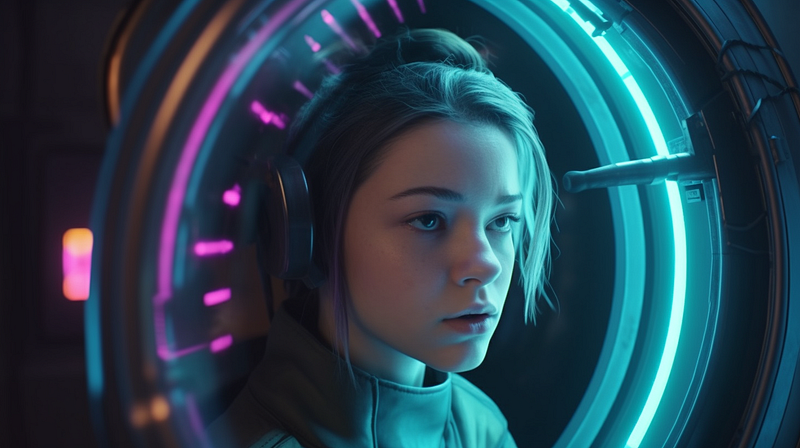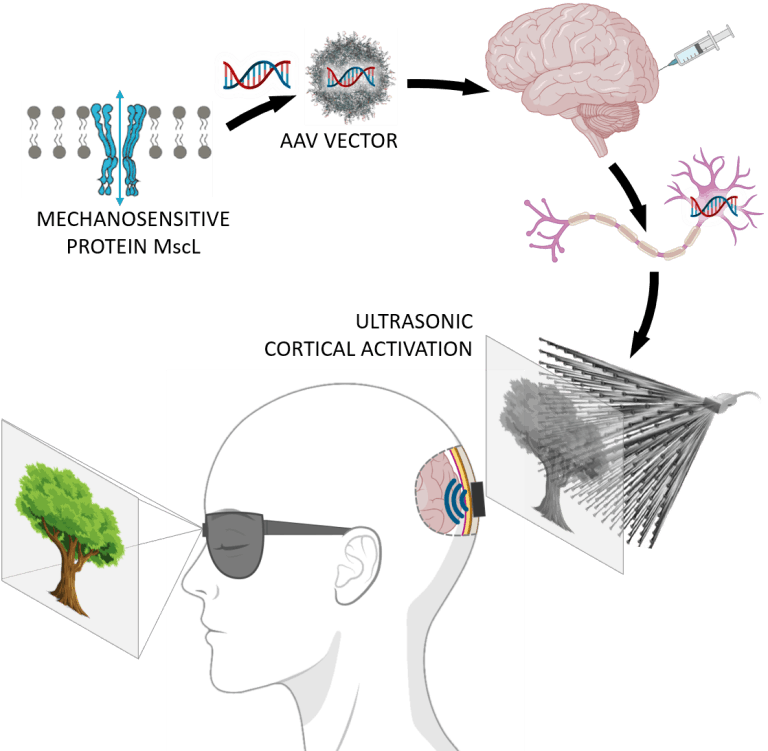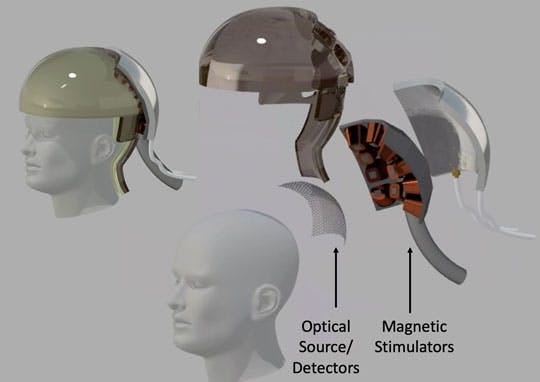Why Brain-Machine Interfaces Will Be Human Kind’s Greatest Invention
Why Brain-Machine Interfaces Will Be Human Kind’s Greatest Invention

I admit that the title may seem strange at first. Why are Brain-Computer Interfaces among humanity’s most important innovations ever made? Just consider fusion energy, which could provide us with infinite energy. Wouldn’t an infinite amount of energy be more critical?
But do we need an infinite amount of energy? Strictly speaking, an individual’s minimal resource requirement is not high. On average, one person needs around 2 x 1 x 1 meter of space and enough energy to keep it warm. With proper insulation, this would be minimal. If we stay still instead of moving, our nutrient intake would also drop to a minimum. Not needing disposables would reduce our ecological footprint to zero and almost eliminate the growing pile of waste surrounding us.
For the nature around us, having us out of the equation would be the “ideal state”. But who would want to live their whole life in a coffin?! Though this might sound daunting at first, let’s look closer. What is missing? Freedom of movement? Not really. What is actually lacking is the input and interaction with each other and the world around us. In essence, our brains — which are us — remain stationary in our heads for the entirety of our lives. It transmits impulses down our limbs and receives input from our senses. If a computer could process and create all of these impulses in the same quality that we experience in reality, our brain would feel just the same as it does now.
If a large portion of our consumption was virtual, we could immediately get rid of many associated problems. Take the meat industry for example. The meat industry contributes significantly to CO2 emissions and requires considerable areas taken from nature. A large part of the animals living on Earth are now kept for profit, and the large majority of wild animals are threatened with extinction, as their habitat is shrinking.
However, meat is not essential. Many vegetarians on Earth never eat meat, yet they are fine. What we really need is not meat, but the feeling of eating meat. What if we could separate the act of eating from the intake of food? The necessary nutrients would be produced locally, thus no need for packing, shipping, etc. The food production process would be completely sustainable. And, if someone was craving a good burger, they would be able to eat it in virtual reality. They would experience the flavor of the burger, the way the juicy patty melts in their mouth, so they would feel the same experience as if they were eating a real burger. Just imagine how many problems this single change could solve.
As almost every problem of mankind stems from overconsumption, if we could shift a significant part of our consumption into the virtual space, we could solve almost every problem of mankind.
Is this too sci-fi? For now, yes. But research in brain-computer interfaces is a very active area of study, so it may become possible within a few decades what I’ve written about.
In the following section, I will discuss where BCI research stands today and what can be expected in the future.
Research on BCIs has an important topic of curing blindness. If we were able to project the image of a camera into the brain of a blind person, this would restore their ability to see. Likewise, if we were able to do this for a blind person, we would also be able to do so for a healthy person. There would be no need for VR headsets anymore if we could project the image directly into the brain. And if we were able to project images into the brain, we could also simulate tastes, smells, and other sensations to a complex degree, such as the experience of eating a hamburger. But is this really possible?
Everyone has probably heard of Elon Musk’s Neuralink, where the ultimate goal is to establish a brain-computer connection of this magnitude. But they are not the only ones working on this technology. Similar technologies are being developed by BlackRock Neurotech and Synchron.
The above three companies are developing invasive technology, hence surgical intervention is required to install the devices, though the aim everywhere is to make this intervention as minimal as possible. However, there are explorations of non-invasive solutions as well, which do not require opening the skull.
According to new research, it is possible to project images into the visual cortex, which is the part of the brain responsible for vision, using focused ultrasound. For this, special viruses must be used to deliver proteins to the neurons that make them sensitive to ultrasound.

The MOANA project, supported by DARPA, started with a similar goal, aiming to create a kind of visual telepathy, but using near-infrared light and magnetic fields instead of ultrasound. In this case, viruses would be employed to make neurons sensitive to light and magnetism so they could be stimulated externally.

Who knows what the future holds?! It is possible that we will be able to access neurons without viruses with the help of nanorobots, or we might use nanoparticles that will be carried by the blood to the brain where an external magnetic field will be used to build wires from them, providing a direct connection to the brain through the back of the neck, somewhat like in the MATRIX.
The realization of brain-computer interfaces is a technological problem. We need to connect an organic machine (the brain) to one based on silicon. Although the problem is complex, it appears tractable and the benefits would be fascinating. For many, this may be a frightening prospect, but this technology could actually liberate us. With the help of brain-computer interfaces, overconsumption, energy problems, and climate change could be reversed. We could solve many problems at once with a single technology, so I believe it is worth focusing more of our resources on this area since in a certain sense brain-computer interfaces are the holy grail of science and technology.
And finally, a short sci-fi story:
By 2030, humanity had been driven to the brink of extinction. The pollution of the environment and the destruction of Earth’s resources had reached such an extent that irreversible changes had been made to the billions-of-years-old ecosystem. The leaders of the world had done almost nothing to halt the catastrophe. They had been blinded by money and power, and the people had been deceived by the empty promises of their leaders. Eventually, the smog had completely shrouded the sun, the soil had become infertile, and famine and destitution spread throughout the land. Due to the extreme weather conditions, more and more places had become uninhabitable, wars had broken out, and countries had been brought to collapse. It was the very hell on Earth, but still, many people kept proclaiming: this is not our fault.
In their desperation, the world’s major tech companies and scientists joined forces in an unprecedented attempt to find a solution. Everyone pinned their hopes on the increasingly advanced artificial intelligence, and eventually, it was the AI who spoke what everyone had been afraid to say: the only way out is to remove the most harmful component, humans! They created a perfect virtual world, the MATRIX, where everyone could live happily ever after.
There was no want, no famine, no diseases. Anyone was able to join the network for free. Those who made the decision had nanobots injected into their bodies, connecting their brains and then linking them to the MATRIX through a port in the back of their neck.
While people were living in perfect abundance in the virtual world, their bodies were being sustained in a self-sustaining ecosystem. Initially, the MATRIX was the heaven for the people, but they could not make sense of their omnipotence and soon grew tired of the perfection. In the end, they decided to erase their previous memories and start a new life in a ‘90s-style world where they had to work for everything, but also be happy with what they had achieved. The people were happy again in this simulated world they had created, where they could finally forget the horrors of the outside world.
With few exceptions, the entire human race had joined the MATRIX, with only a few smaller colonies like Zion having rejected the technology. They lived underground in cramped bunkers subsisting on a tasteless protein shake. It was a living hell. Refusing to accept the comforts of what they considered an insidious world, they had fabricated some strange children’s story about the machines forcibly dragging people into the MATRIX to be used as some kind of energy source. Although it was plainly contradictory — they had, after all, access to sources like nuclear energy — everyone believed it and propagated it. They were sick people, the products of a sick world.
For a long time, the two worlds coexisted peacefully until a small group of self-proclaimed heroes set out to “save” humanity from the MATRIX. This is now their story…
Another article of mine about the topic from 2019: